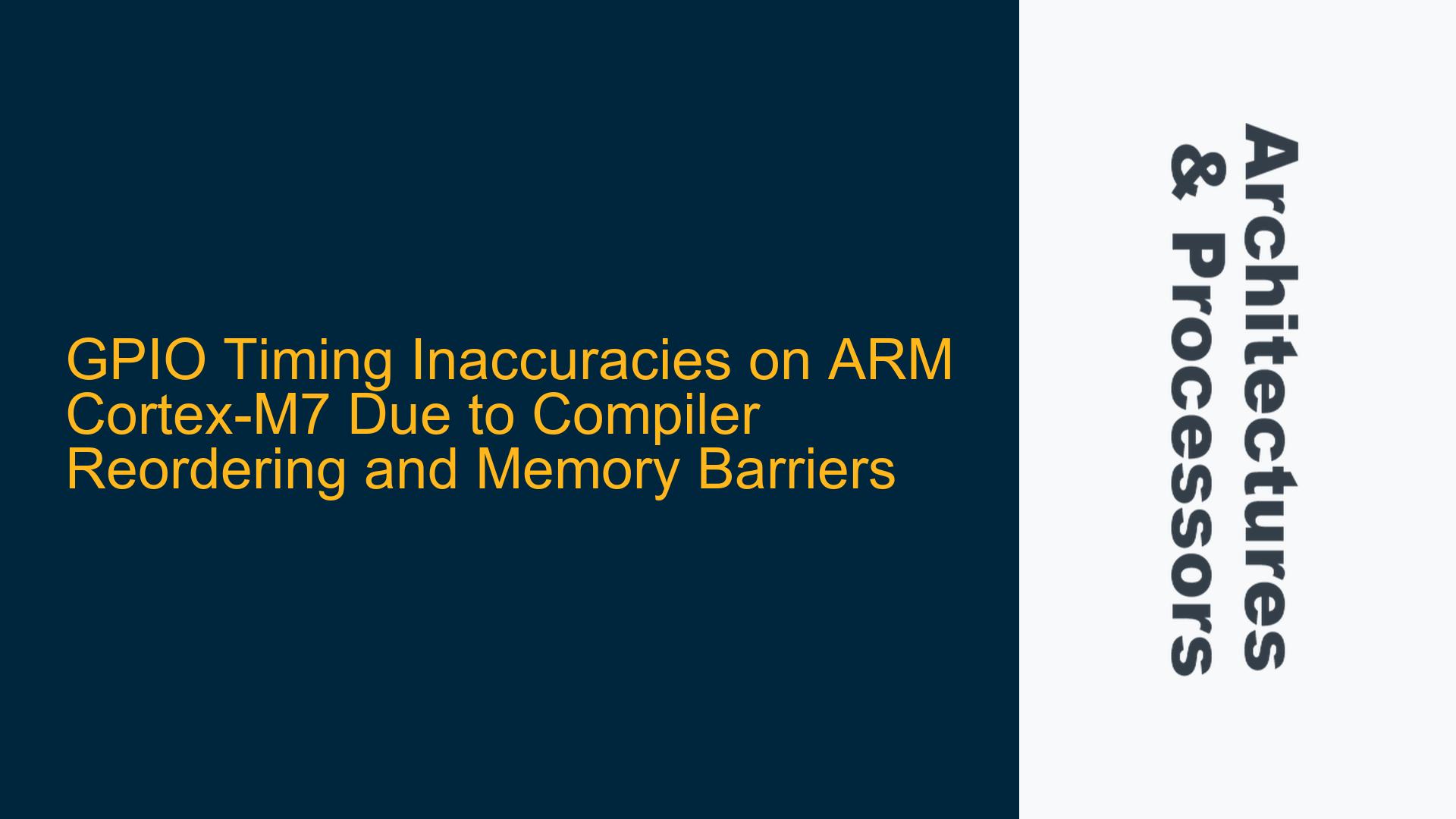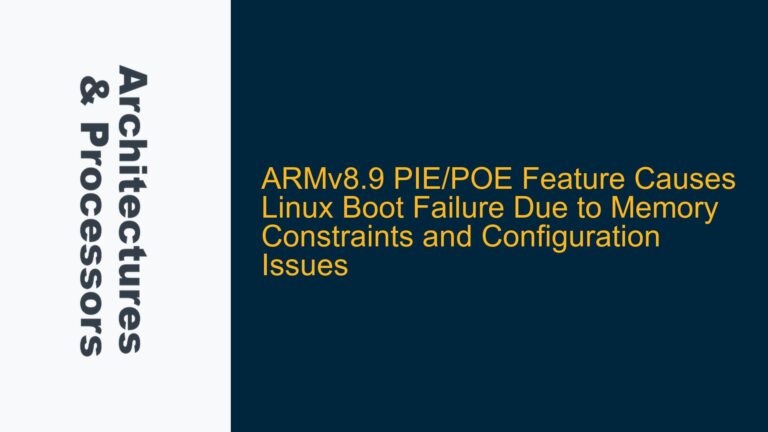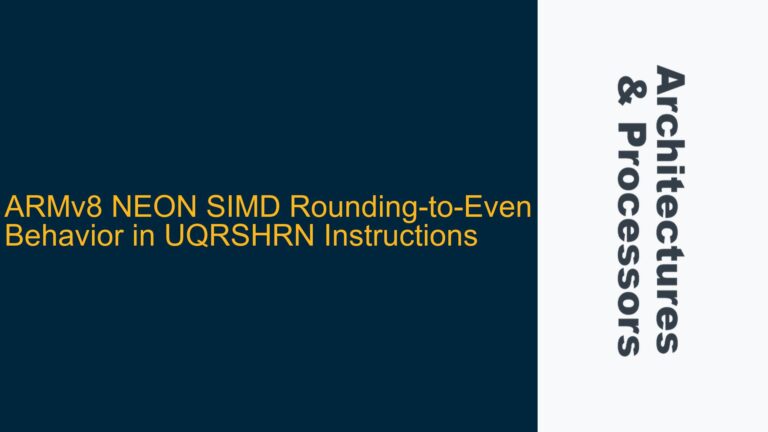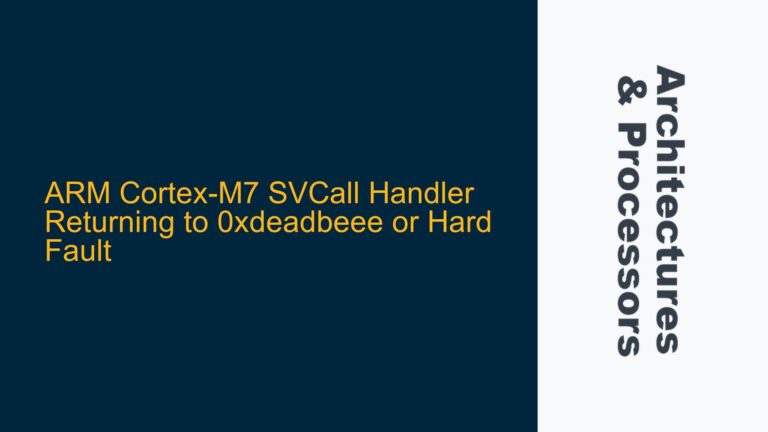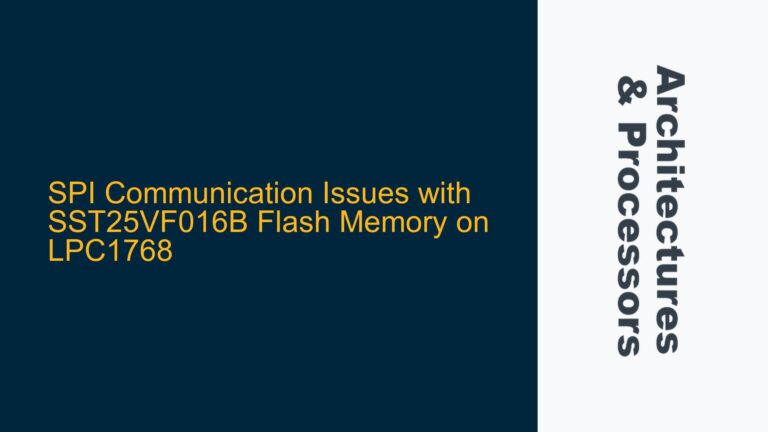GPIO Timing Measurement Issues on ARM Cortex-M7
When using GPIO pins to measure the execution time of functions on an ARM Cortex-M7 processor, inconsistencies can arise due to several factors. The primary issue is that the observed GPIO toggling on an oscilloscope does not always align with the expected timing of function execution. This discrepancy can be attributed to compiler optimizations, memory access reordering, and the lack of explicit memory barriers. The Cortex-M7’s advanced pipeline and out-of-order execution capabilities further complicate the scenario, as the processor may reorder memory accesses unless explicitly instructed otherwise.
The problem is exacerbated when using low-level GPIO manipulation libraries provided by vendors like STMicroelectronics. These libraries may introduce additional latency or unexpected behavior due to their internal implementation. For instance, using a library function to toggle a GPIO pin might result in different timing characteristics compared to directly writing to the GPIO registers. This inconsistency can lead to misleading measurements, especially when trying to profile tight loops or time-critical sections of code.
Another layer of complexity arises from the compiler’s behavior. While the ARM Compiler (armcc) generally respects the order of volatile memory accesses, it may still reorder non-volatile accesses around them. This can cause the GPIO toggling instructions to be executed out of sequence with respect to the surrounding code, leading to inaccurate timing measurements. The Cortex-M7’s memory system, which includes caches and write buffers, can further obscure the timing by delaying the visibility of GPIO changes to the external world.
Compiler Reordering and Memory Barrier Omission
The root cause of the GPIO timing inaccuracies lies in the interplay between compiler optimizations and the Cortex-M7’s memory system. The ARM Compiler, like most modern compilers, performs various optimizations to improve performance and reduce code size. One such optimization is instruction reordering, where the compiler rearranges instructions to maximize pipeline efficiency and minimize stalls. While this is generally beneficial, it can lead to unintended consequences when dealing with hardware peripherals like GPIOs.
In the context of GPIO timing measurements, the compiler might reorder instructions around the GPIO toggling code, especially if the GPIO accesses are not marked as volatile. Even if the GPIO registers are declared as volatile, the compiler may still reorder non-volatile memory accesses around them. This can cause the GPIO toggling to occur at unexpected times, leading to inaccurate measurements on the oscilloscope.
The Cortex-M7’s memory system further complicates matters. The processor features a write buffer that allows it to continue executing instructions while writes to memory are being completed. This can delay the visibility of GPIO changes to the external world, making it appear as though the toggling occurred later than it actually did. Additionally, the Cortex-M7’s cache can introduce further delays, as writes to cached memory may not be immediately flushed to the main memory.
To address these issues, memory barriers must be used to enforce the correct ordering of memory accesses. ARM provides several intrinsic functions for this purpose, including __dsb(), __dmb(), and __isb(). These functions ensure that all memory accesses before the barrier are completed before any accesses after the barrier are started. However, using these barriers incorrectly or unnecessarily can degrade performance, so they must be used judiciously.
Implementing Memory Barriers and GPIO Timing Best Practices
To ensure accurate GPIO timing measurements on the Cortex-M7, a combination of compiler directives, memory barriers, and careful GPIO manipulation is required. The first step is to ensure that all GPIO accesses are marked as volatile. This prevents the compiler from reordering these accesses with respect to other volatile accesses. However, it does not prevent reordering with respect to non-volatile accesses, so additional measures are needed.
The next step is to use memory barriers to enforce the correct ordering of memory accesses. The __dsb() (Data Synchronization Barrier) intrinsic can be used to ensure that all memory accesses before the barrier are completed before any accesses after the barrier are started. This is particularly useful when toggling GPIO pins, as it ensures that the GPIO changes are visible to the external world before proceeding to the next instruction.
In addition to memory barriers, it is important to minimize the overhead of GPIO manipulation. Directly writing to the GPIO registers is generally faster and more predictable than using library functions, as it avoids the overhead of function calls and potential internal delays within the library. However, this approach requires a thorough understanding of the GPIO peripheral’s register map and the specific bit manipulations required to toggle the pins.
When measuring the execution time of functions, it is also important to ensure that there is only a single exit point from the function. This prevents the compiler from generating multiple copies of the GPIO toggling code, which can lead to inconsistent timing measurements. Additionally, using a tight loop to toggle a GPIO pin can help measure the overhead of the GPIO manipulation itself, providing a baseline for more accurate timing measurements.
Finally, it is crucial to verify the generated assembly code to ensure that the compiler has not introduced any unexpected reordering or optimizations. The ARM Compiler provides options to generate assembly listings, which can be inspected to confirm that the GPIO toggling instructions are placed correctly and that the memory barriers are effective.
By following these best practices, it is possible to achieve accurate and reliable GPIO timing measurements on the ARM Cortex-M7. The key is to understand the interactions between the compiler, the processor’s memory system, and the GPIO peripheral, and to use the appropriate tools and techniques to control these interactions.
| Technique | Purpose | Example |
|---|---|---|
| Volatile Keyword | Prevent compiler reordering of GPIO accesses | volatile uint32_t* gpio_reg = (uint32_t*)0x40020014; |
Data Synchronization Barrier (__dsb()) |
Ensure completion of all memory accesses before proceeding | __dsb(); |
| Direct GPIO Register Manipulation | Minimize overhead and ensure predictable timing | `*gpio_reg |
| Single Function Exit Point | Prevent multiple copies of GPIO toggling code | void function() { if (error) return; /* single exit */ } |
| Assembly Code Verification | Confirm correct placement of GPIO toggling instructions | Inspect generated assembly listing |
In conclusion, accurate GPIO timing measurements on the ARM Cortex-M7 require a deep understanding of the processor’s architecture, the compiler’s behavior, and the GPIO peripheral’s operation. By using memory barriers, minimizing overhead, and verifying the generated code, it is possible to achieve reliable and precise timing measurements, even in complex embedded systems.
